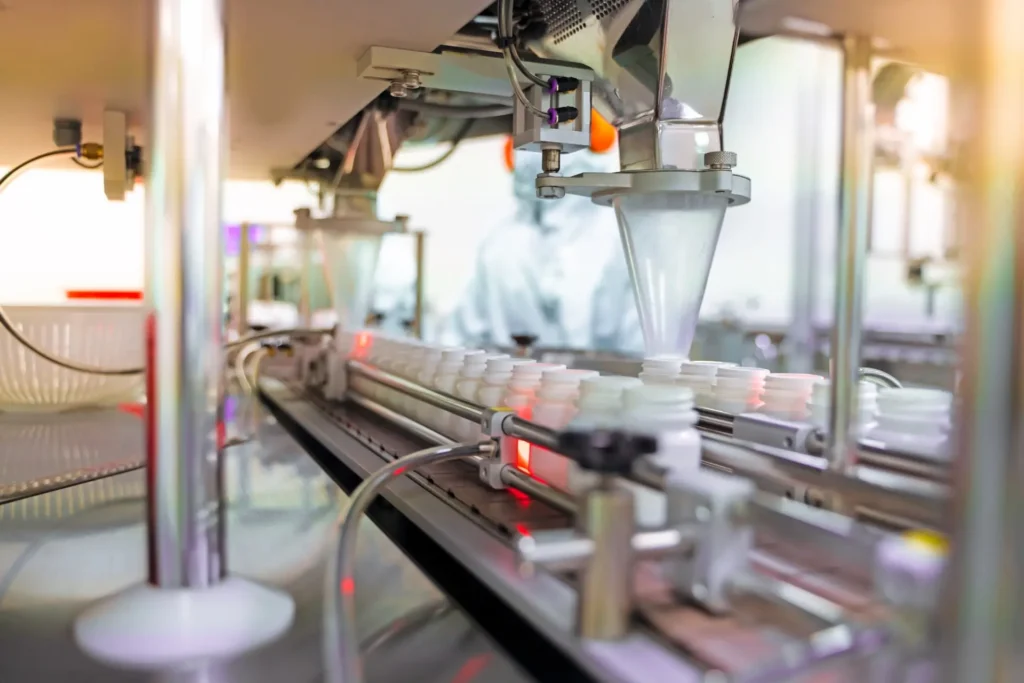Quality control in production usually begins where a problem appears. But in which area did it actually arise – in the process, the machine, or the material?
- Your company is generating increasing losses due to scrap, while the causes of deviations remain unexplained.
- Fluctuating machine parameters, lack of full automation of measurements, and scattered operator data mean that reactions occur only after defects are detected.
- Each batch rejected due to dimensional inaccuracies, tolerance exceedances, or incorrect process parameters generates material costs, inefficient labor, and reputational risk.
To effectively improve the quality index, a digital process control system is needed – one that integrates real-time measurements, automatic deviation detection, statistical process control (SPC), and full traceability of production processes. This allows the plant to react immediately, while the production process becomes stable, predictable, and optimized for both quality and cost.
In this article, we will take a closer look at traditional and digital quality control, explore how to effectively collect data without delays, outline the stages of implementing digital solutions, and present the business benefits that can be achieved.
Digital vs. traditional quality control in manufacturing
Effective quality control in production should enable the prediction of problems rather than reacting only after they occur. Traditional manual and sample-based methods, such as sampling, manual measurements, and spreadsheet documentation, lead to delayed responses, often resulting in material losses, machine downtime, and the need to repeat batches.
Digital quality control, on the other hand, enables continuous monitoring of process and machine parameters, real-time deviation detection, and predictive decision-making. This makes it possible to respond before an issue becomes an expensive defect, significantly improving quality indicators and reducing production costs.
Real-time data collection and analysis
Optimal quality control in production relies on continuous measurement and recording of process parameters.
Digital systems use IoT sensors, vision cameras, and measuring devices that continuously monitor parameters such as temperature, pressure, vibration, rotational speed, torque, as well as product dimensions and tolerances.
Data is transmitted to a central database in real time. This approach allows not only immediate reaction but also trend analysis and deviation prediction before defects occur.
Example: A drop in torque in a machining tool can indicate tool wear and allow for adjustment before non-compliant parts are produced.
Quality control in manufacturing – Integration with MES and ERP systems
In an automated production plant, data from measurements, IoT sensors, and vision systems flows directly into MES and ERP systems, creating a consistent source of information about the production process.
This enables real-time quality monitoring and allows managers to use this knowledge for both strategic and operational decisions.
Technical aspects of digital quality control
- Data standardization: Measurements from machines, sensors, and vision systems are aggregated in a unified format, allowing MES or ERP software to analyze them automatically.
- Constant communication: The use of industrial protocols (OPC UA, MQTT) ensures instant data flow from the production floor to higher-level systems.
- Traceability: Every product and production batch is fully traceable. It’s possible to reconstruct the history of parameters, operators, machine settings, and materials used. (We also discussed the benefits of traceability in our article on reducing production costs.)
- Automatic reporting: The MES system generates real-time reports showing deviation indicators, machine efficiency, and batch quality, without manual data entry. These reliable data, presented in an easy-to-analyze format, can form the basis for effective quality control and process optimization.
Quality control – Broader automation capabilities
- Integration with quality and CRM systems: Enables analysis of how production quality impacts customer satisfaction, complaints, and returns.
- Integration with analytics and AI: MES and ERP systems can cooperate with predictive algorithms, SPC modules, or AI-based tools. With reliable data, such solutions effectively analyze deviations, trends, and potential process risks.
- Process optimization: Integration and instant data flow support better decision-making at the plant or company level – from real-time machine parameter adjustments to changes in production plans. These actions can reduce downtime, improve energy efficiency, and lower material costs.

Monitoring Process Stability in Quality Control
A module of the MES system, such as the Production Portal by explitia, is SPC (Statistical Process Control). This solution enables continuous and advanced monitoring of production process stability by checking in real time whether the parameters of machines, materials, and processes remain within predefined control limits. This allows early detection of deviations from the norm, even before they result in defects or scrap. While SPC does not replace full product quality control, it has a direct and significant impact on product quality, as a stable and repeatable process minimizes the risk of nonconformities.
The system analyzes data collected from sensors, vision cameras, and other measuring devices, automatically generates control charts and process capability indices, and enables visualization of trends and early identification of potential issues. This allows operators and managers to make predictive decisions – such as adjusting machine settings, replacing tools, or changing process parameters – before a nonconforming product appears.
Additionally, integrating the SPC module with other modules of the fertigungsmanagement-portal enables process traceability and, when necessary, the quick linking of deviations to specific machines, operators, or production stages, as well as generating process reports in real time. In practice, this means that SPC within MES not only monitors process stability but also becomes an essential tool supporting quality control in production.
Automation of Response and Efficiency Improvement
Imagine you’re on the production floor and notice that one of the process parameters is approaching a critical limit. In a traditional plant, the operator might not detect this until defective parts have already been produced, resulting in material losses and downtime.
However, the company uses the SPC module in its MES system, which monitors process stability and sends an early alert, signaling a potential deviation. This enables action to be taken before the problem leads to defective products.
Digital quality control allows for automatic responses to such situations: production lines can be stopped automatically, operators receive immediate notifications, and the system generates maintenance tickets. This approach minimizes reaction time, reduces material waste and downtime, and helps maintain maximum efficiency of both machines and operators.
Importantly, automation can also work together with trend analysis. In such cases, the system suggests preventive actions – for example, adjusting machine settings or replacing tools before the situation gets out of control. This makes production more stable and predictable.

Business Benefits of Automated Quality Control in Manufacturing
Automated quality control in production, based on continuous data collection and broad integration of systems and devices, delivers measurable business benefits. The combination of vision cameras, sensors, machines, the SPC module, and other MES modules creates a consistent source of process knowledge. This approach enables ongoing parameter monitoring, automatic alert generation, rapid corrective actions, and prediction of potential deviations. It supports not only operators, maintenance, and quality departments but also those responsible for strategic and operational management.
Key Benefits
- Reduction of material losses and scrap – early detection of deviations minimizes the occurrence of defects.
- Shorter response time to problems – the system immediately notifies operators and maintenance teams, reducing downtime.
- Increased process stability and repeatability – continuous parameter monitoring and trend analysis keep production within predictable limits.
- Optimized resource utilization – operators and machines work more efficiently thanks to automatic process adjustments and predictive data-driven insights.
- Full traceability and reporting – data integration from all sources enables process reporting and root cause identification.
- Better strategic decisions and competitive advantage – stable product quality and minimized defects lead to higher customer satisfaction and optimized production costs.
Quality control in manufacturing should no longer be limited to post-factum reactions. Today, production plants can leverage automation and digital solutions that enable continuous process monitoring, automatic deviation detection, and preventive actions – allowing intervention before nonconformities occur. It is not just a tool for ensuring quality but a crucial element of the overall business efficiency of the manufacturing plant.

